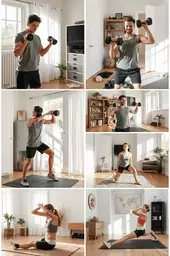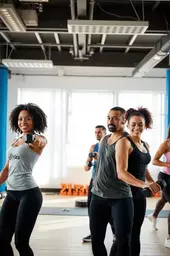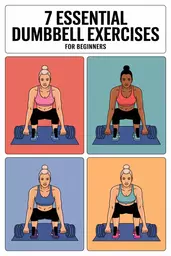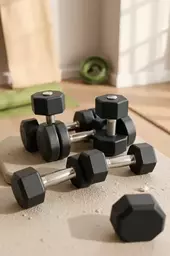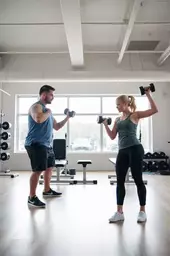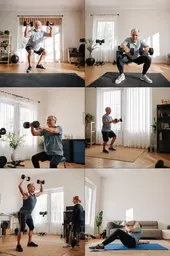
Dumbbell Workouts: A Beginner's Essential Guide
Step 1: Choose the Right Dumbbells for You
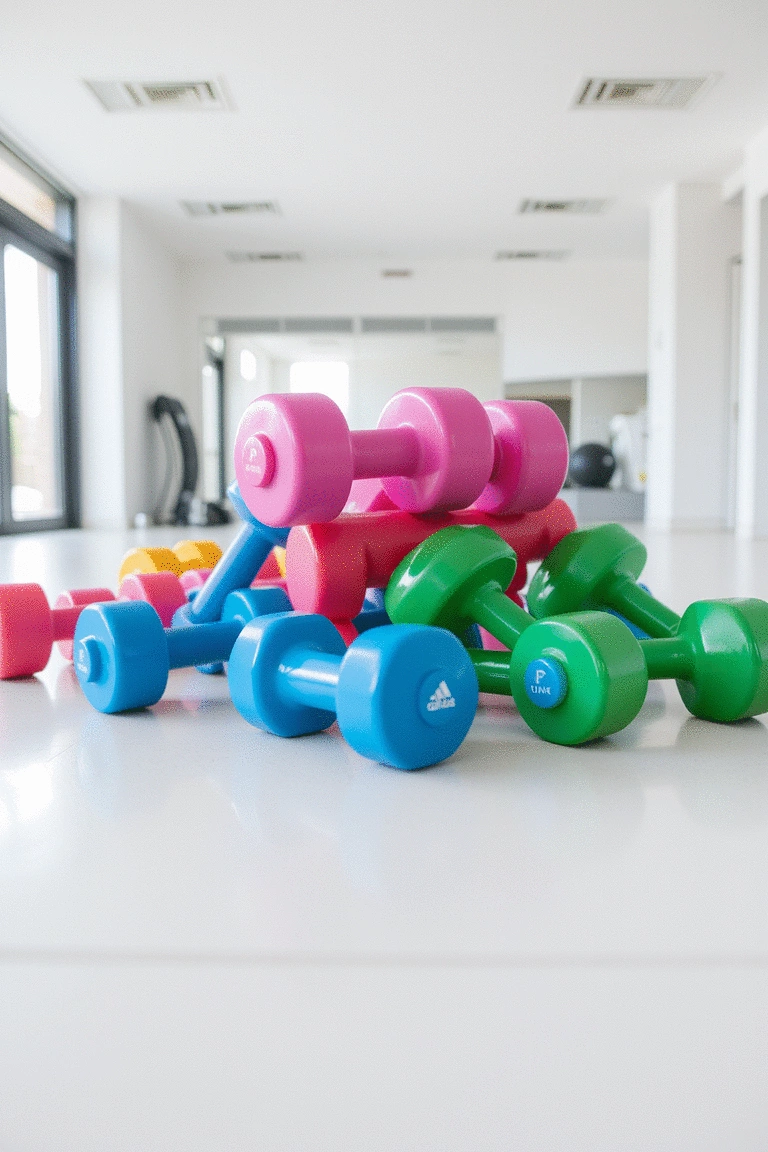
Kickstart your journey with the perfect set of dumbbells tailored for you.
Why this works: Choosing the right dumbbells is crucial for comfort and effective workouts. The right weight allows you to build strength progressively without risking injury, making it a perfect starting point for your fitness journey.
How to implement this step:
- Assess your fitness level: Start with lighter weights if you're a beginner.
- Consider adjustable dumbbells: They save space and allow for weight progression.
- Visit a local store: Test different weights to find what feels comfortable.
💡 Pro Tip: Invest in a high-quality set that suits various exercises; it pays off in the long run!
Step 2: Master the Basic Dumbbell Grip
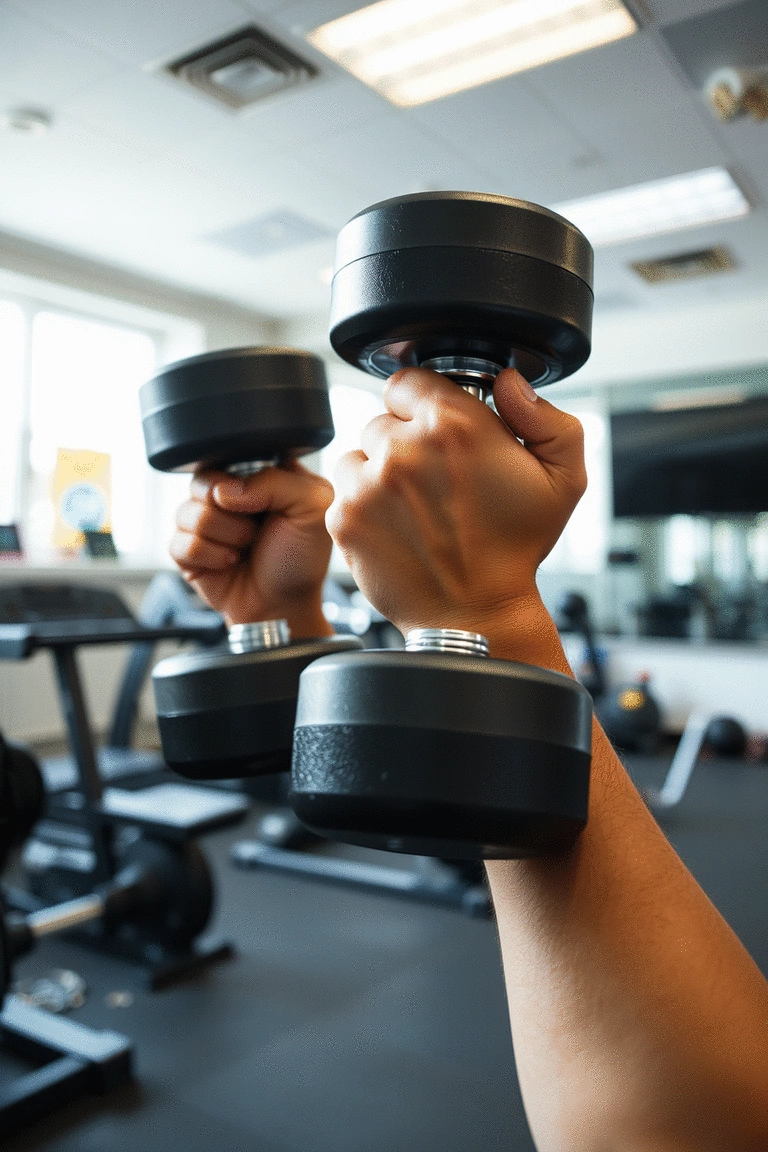
Grip your dumbbells properly for safety and effectiveness in all exercises.
Why this works: A proper grip enhances your control and prevents unnecessary strain. Mastering the right grip ensures you maximize strength gains while reducing the risk of injury, especially for beginners.
How to implement this step:
- Hold dumbbells at your sides: Ensure palms face inward for a neutral grip.
- Use a firm grip: Avoid excessive pressure that can lead to tension or pain.
- Practice with lighter weights: Focus on grip technique before increasing weight.
💡 Pro Tip: Regularly check your grip during workouts to ensure you're maintaining proper technique!
Step 3: Start with Dumbbell Squats
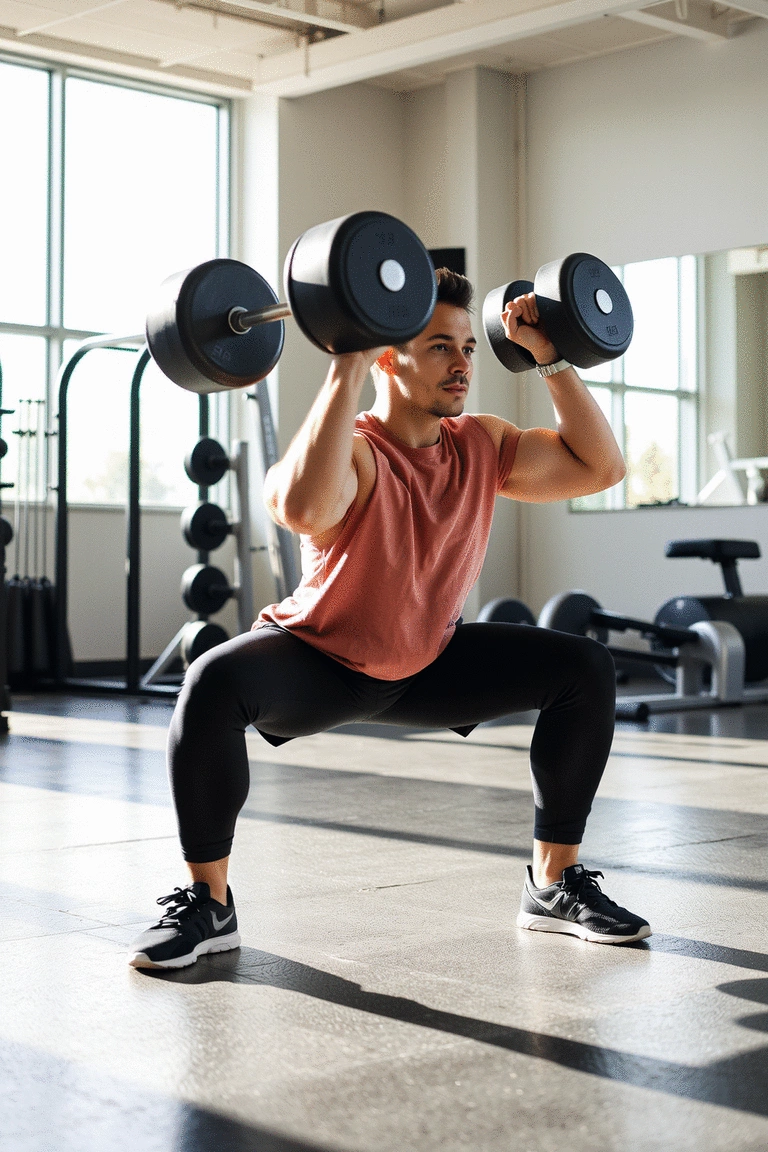
Dumbbell squats build strength in your legs and core effectively.
Why this works: Dumbbell squats enhance lower body strength and engage your core. They are fundamental for overall conditioning and form the base for more advanced movements as you progress in your fitness journey.
How to implement this step:
- Stand tall: Hold dumbbells at shoulder height or by your sides.
- Lower your body: Bend your knees while keeping your chest up and back straight.
- Push back up: Engage your legs to return to the starting position.
💡 Pro Tip: Start with 2-3 sets of 10-15 reps; focus on form before increasing weight!
Step 4: Incorporate Dumbbell Rows
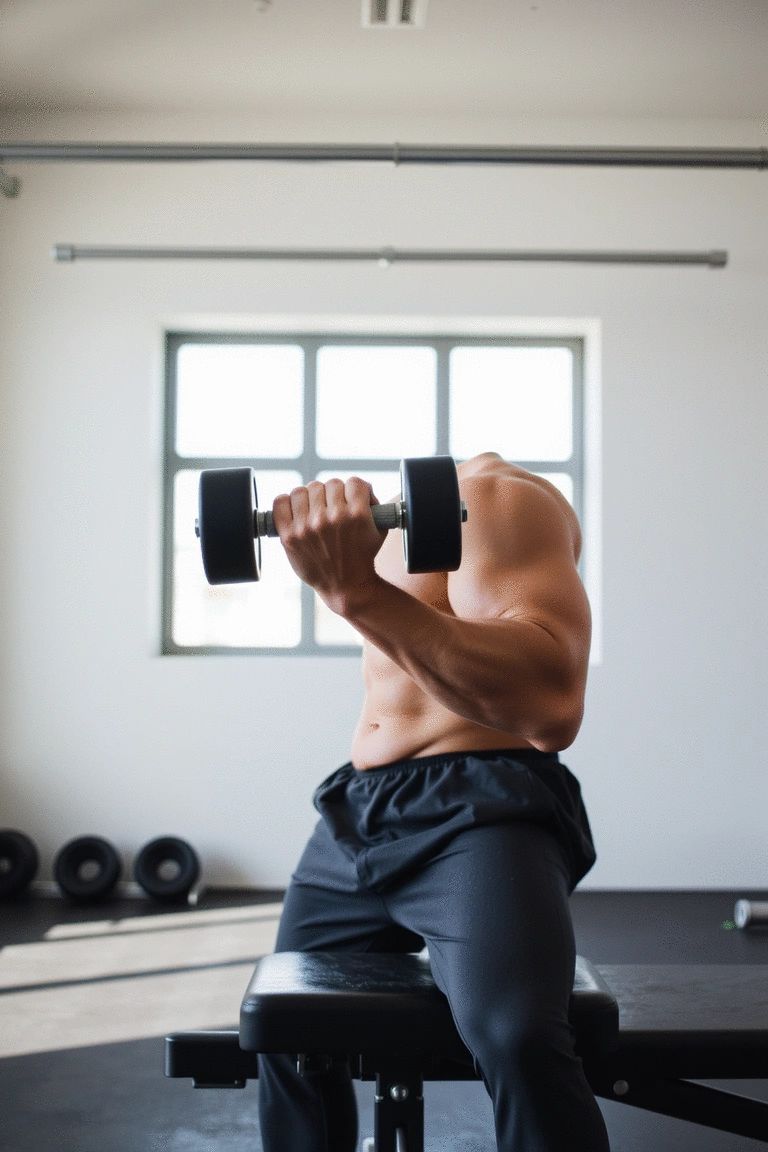
Dumbbell rows strengthen your back and improve posture.
Why this works: Incorporating dumbbell rows targets back muscles, promoting better posture and strength. This foundational exercise is vital for balanced body strength and enhances your ability to perform daily activities.
How to implement this step:
- Find a sturdy surface: Bend over with one knee on the bench or a sturdy surface.
- Pull the dumbbell: Bring it toward your hip, squeezing your shoulder blade.
- Lower it slowly: Ensure control during the descent for maximum benefit.
💡 Pro Tip: Focus on squeezing your shoulder blades together for optimal back engagement!
Step 5: Try Dumbbell Shoulder Press
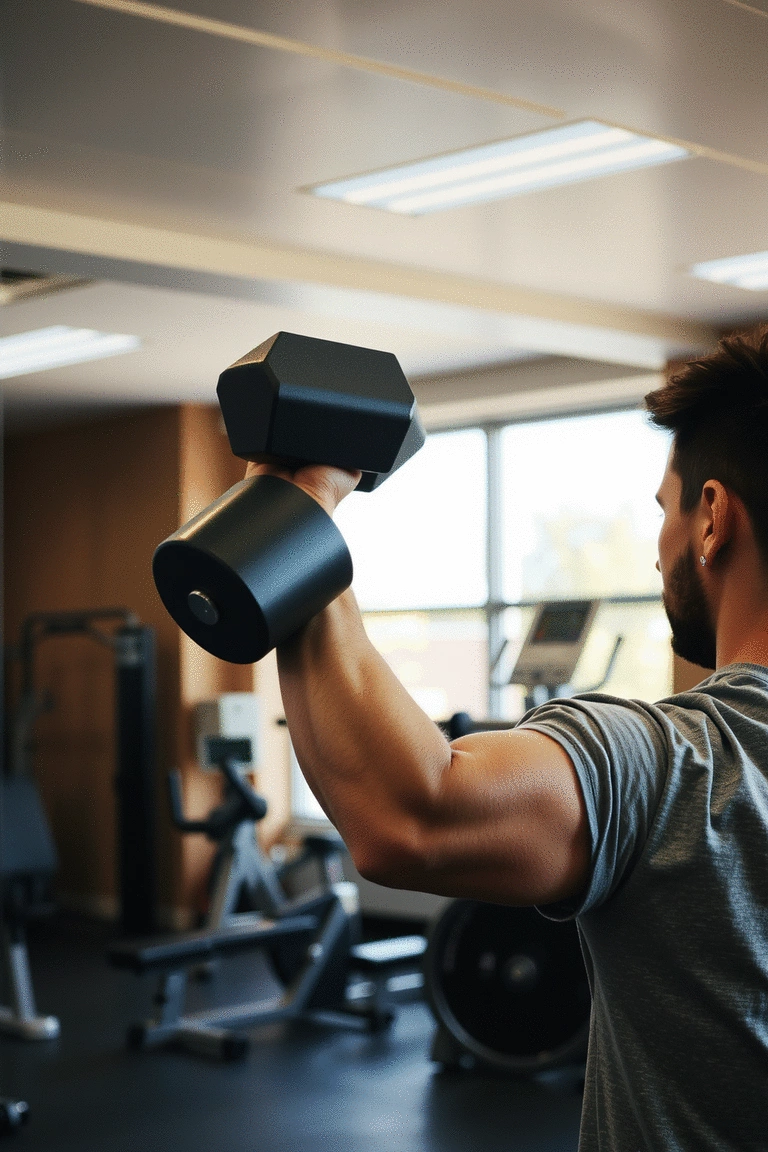
Build shoulder strength with effective dumbbell presses.
Why this works: The dumbbell shoulder press strengthens your shoulders and upper back, essential for overall upper body strength. This exercise enhances your capability to lift objects safely and maintain good posture.
How to implement this step:
- Stand or sit: Keep your core tight and begin with dumbbells at shoulder height.
- Press overhead: Extend your arms fully while keeping your elbows slightly bent.
- Lower slowly: Maintain control as you return to the starting position.
💡 Pro Tip: Use a mirror to check your form and ensure you're pressing correctly!
Step 6: Embrace Dumbbell Lunges
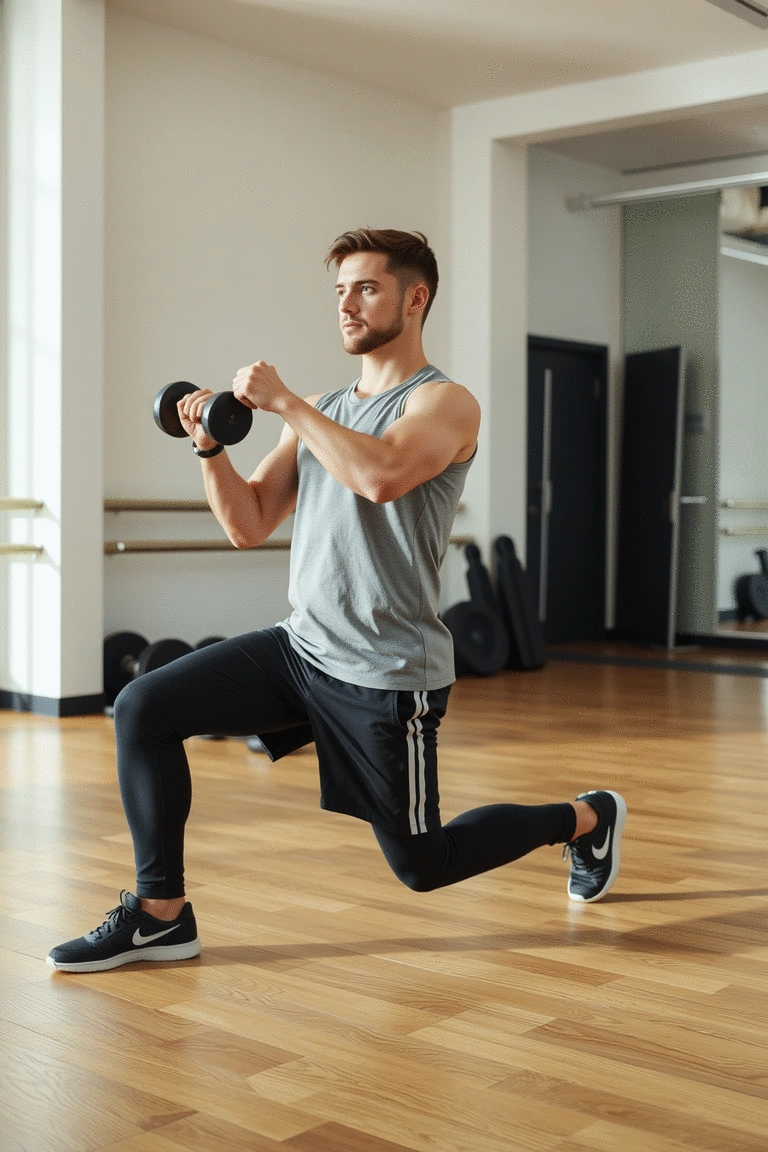
Dumbbell lunges enhance lower body strength and balance.
Why this works: Dumbbell lunges are a fantastic way to build leg strength and improve balance. This exercise activates multiple muscle groups, making it efficient and effective for overall fitness.
How to implement this step:
- Step forward: Keep your back straight and lower your knee toward the ground.
- Push back: Return to the starting position using your front leg.
- Alternate legs: Perform lunges with both legs to ensure balanced strength.
💡 Pro Tip: Keep your front knee above your ankle for proper alignment and safety!
Step 7: Conclude with Dumbbell Deadlifts
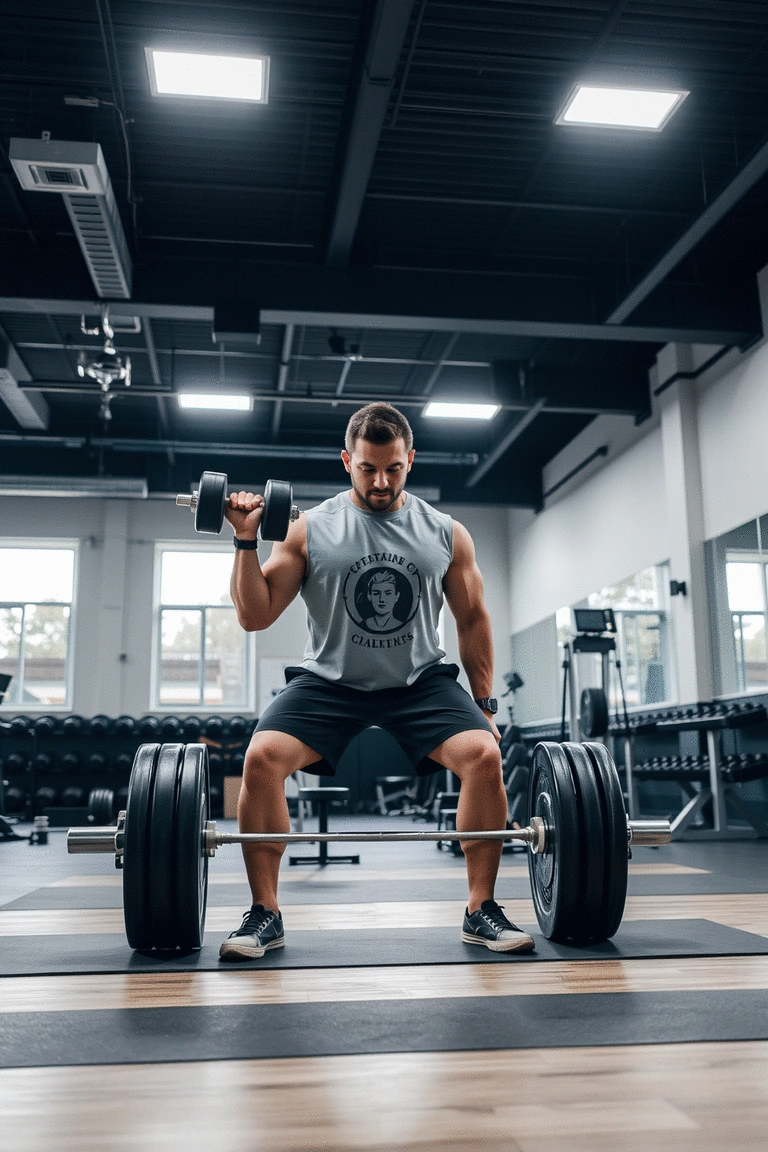
Finish strong with dumbbell deadlifts for full-body strength.
Why this works: Dumbbell deadlifts engage your entire body, focusing on the back, legs, and core. This exercise is essential for building overall strength and functional fitness, making it perfect as a concluding movement in your routine.
How to implement this step:
- Stand tall: Hold dumbbells in front of your thighs with feet shoulder-width apart.
- Bend at your hips: Lower dumbbells while keeping your back straight and knees slightly bent.
- Stand up tall: Engage your glutes and return to the starting position.
💡 Pro Tip: Focus on hinging at your hips rather than bending at your waist for safer lifting!
